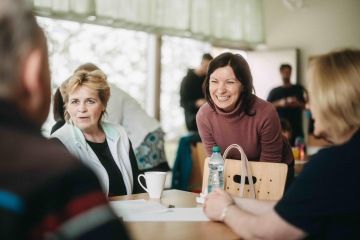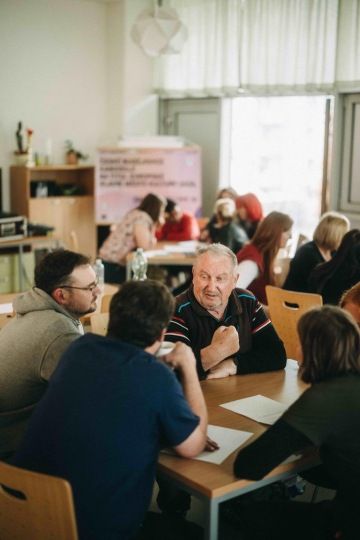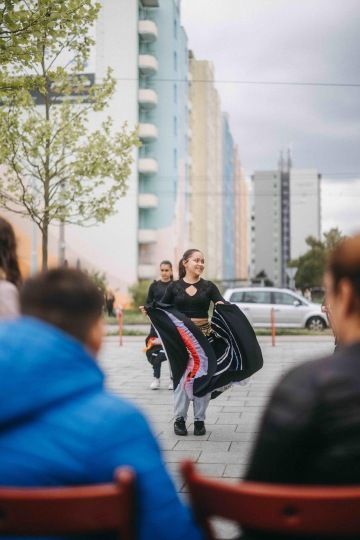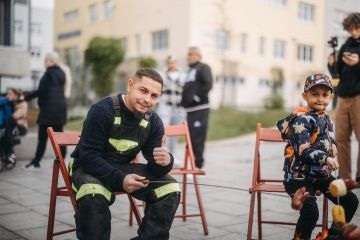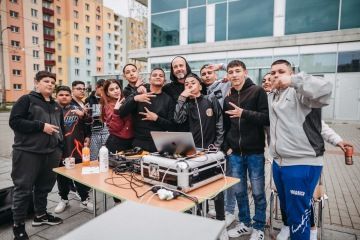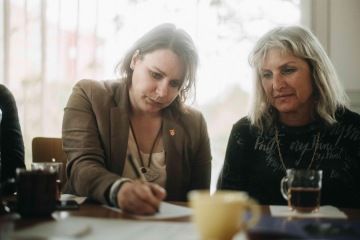Neighbourhood meeting at Máj housing estate
On Wednesday the 17th of May, in the early evening, several dozen people gathered at the Máj Community Centre. The aim was to meet with neighbours and discuss what activities or improvements would make coexistence in the largest housing estate in České Budějovice more pleasant. The meeting was organised by the candidate for the European Capital of Culture Budějovice 2028 and Česká spořitelna, which awarded the winning ideas with a donation.
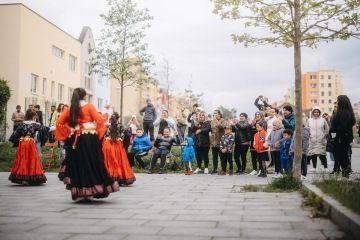
Representatives of local associations established four topics that people could debate. "The voting on the topics was conducted online and the response was greater than we expected," says Lucie Boušková from the registered institute Budějovice 2028. The first group discussed neighbourhood activities. "There are many possibilities. Workshops, markets, evening music activities, outdoor screenings... We would like to focus on connecting generations. Maybe through cooking and baking together. We can imagine a street food café offering cakes baked by seniors together with children. We would also like to see more involvement of the locals - not only to bring entertainment to them, but to encourage them to show their neighbours what they can do," summarised Tereza Koutská on behalf of the first group.
The theme of the second group was public greenery, water and shade. "We decided to focus on the green. It would be great to have a community garden, or maybe just front gardens in front of apartment buildings where people could grow vegetables or herbs. It should be covered by the city and should give people a concept and support. Also, there's too much concrete and pavement here unnecessarily. The concrete walls could be decorated with pergolas made of climbing plants, which would also improve the thermal comfort in summer," said Lenka Štěrbová on behalf of the second group.
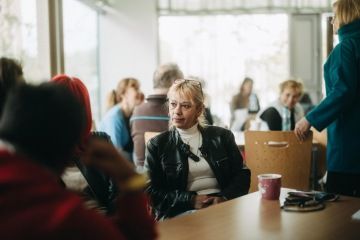
The third group was focused on unnecessary items for which another use could be found. "We have flats and houses overflowing with things that we don't use but could still be useful to someone else. We suggest a simple solution - a good old notice board where locals could post offers and enquiries. And not only for things, but also for repairs. It's a much better way to connect people than just coming into a warehouse and taking something away. A bulletin board is cheaper and more personal," explained Václava Medalová-Hůdová on behalf of the third group.
The fourth group debated about suitable meeting places. In addition to a fire pit in the park or a children's forest playground, the idea of expanding the animal husbandry at the Lišov Pond came up. "When they started having piglets, families with children started to come here. Or the elderly. More benches and more animals could be added. We also like the idea of a mobile café with an accompanying programme or a café on the roof of the exchanger. It would be nice if the city did a survey to find out what locals really want," described Tomáš Červený on behalf of the group.
After the debate, people voted on which topics they liked most. The winners were the neighbourhood activities and the bulletin board, and Česká spořitelna awarded each of them a contribution of CZK 40,000. "Within the framework of neighbourhood projects we try to support local communities. We want people from one village or neighbourhood to come together, communicate with each other and strengthen mutual ties. And not to be afraid to come up with an idea or address what is currently burning them. At the same time, we also try to inspire them, so we invite interesting guests to these meetings who have experience with these topics and can pass them on," says Andrea Studihradová from Česká spořitelna.
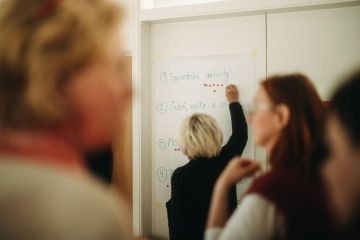
That is why Beáta Andrejková and Peter Olejar from Výmenníky (www.vymenniky.sk) in Košice came to Máj and reported how the transformation of unnecessary heat exchangers into small cultural community centres in Košice's housing estates was carried out. Incidentally, thanks to this project, Košice also became the European Capital of Culture in 2013.
The next guest was Monika Hillenbrandová from the Plechárna Community Centre in Prague's Černý Most (www.plecharnacernymost.cz). Monika described how they gradually gained the trust of the residents of the housing estate and why she had to leave Plechárna after many years.
The third guest was Jiří Ptáček, the man behind the Survival Hotspot. It is to be built in June on an unsightly square in the central part of the Šumava housing estate. He showed what the hotspot will look like and explained what purpose it should serve. The project is part of Budweis's candidacy for the European Capital of Culture 2028.
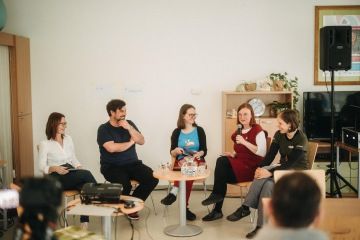
Check out the photos from the day. The author is Pavel Balek
